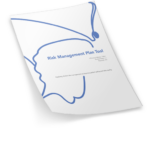
mindsON RBQM Workshop | Episode 38: How to design a Key Risk Indicator that works
How to design a Key Risk Indicator that works
Designing an effective Key Risk Indicator (KRI) involves more than just picking a metric. It requires careful consideration of data sources, refresh frequency, direct linkage to the identified risk, timing for activation, and balancing sensitivity to avoid excessive false positives or negatives. Getting these right can significantly improve risk monitoring and overall trial quality.
Join our experts, Johann Proeve and Keith Dorricott, in this mindsON RBQM session as they break down these challenges and share practical tips to help you create KRIs that truly work. Participate through live polls and whiteboard discussions or simply listen and gain insights.
🔍 What you’ll gain:
-
Key factors to consider when designing KRIs
-
How to select reliable data sources and determine update intervals
-
Understanding the relationship between KRIs and specific risks
-
Strategies to minimize false alarms without missing critical signals
-
Interactive engagement to discuss your challenges and solutions
Whether you’re involved in clinical operations, quality assurance, or RBQM strategy, this session will help you refine your approach to risk indicators and strengthen your trial oversight.




